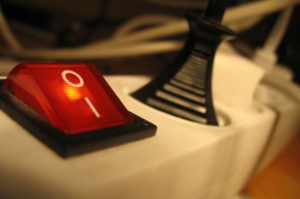April 5, 2021
Vampire energy is energy used by appliances and electronics even when they are turned off, or fully charged, but still plugged in. It is also known as standby energy as it is often associated with remote ready devices in standby mode, like TVs and computers that can be woken up with the push of one button.
Many of us are unaware of this wasted energy that can account for up to 20% of your monthly electric bill. Where is this vampire energy coming from and how can you slay it to reduce your bill?
Common sources of vampire energy
|
|
Reducing vampire energy
- Use power strips as a central cutoff for electronics and small appliances: Unplugging every one of your electronics and small appliances after every use is probably not feasible. However, using power strips can provide one convenient shut off point.
For example, try using a strip for your TV, DVD player, stereo, and gaming system and another for your coffeemaker, toaster oven, and microwave. At night or when leaving your home for the day, you can flip just two switches and cut power to several vampire energy leaks at the same time.
- Unplug chargers and seldom used items: Chargers continue to pull energy even when a phone, tablet or other device is fully charged, and when plugged in but not connected to a device. It is convenient to leave a charger in a socket but wasteful, so unplug them when not in use, or again consider the power strip solution if you prefer to leave chargers at the ready. Many multi device charging stations also have a central cut off.
You can also consider leaving lesser used items unplugged. If you only play video games a few days a week, leaving it unplugged will save energy and cost.
- Buy ENERGY STAR®: When shopping for an appliance or electronic look for the ENERGY STAR® certification. These products are certified by the Environmental Protection Agency to be more efficient and cost less to operate, while meeting performance standards. Over the life of a product the savings add up!
The National Resource Defense Council reports the cost of lost vampire energy in the U.S. at $165 to $440 per household depending on size and location. Being aware of vampire energy loss and taking a few simple actions can help put some of that money back in your pocket!



